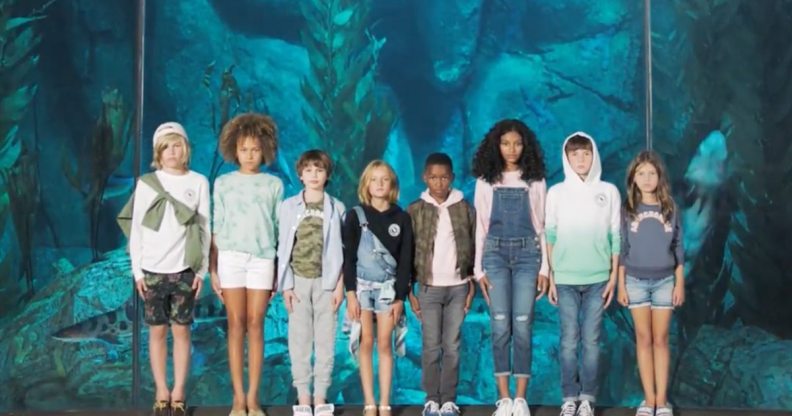Abercrombie & Fitch has launched gender-neutral children’s clothes – and people are angry

Abercrombie & Fitch has launched a gender-neutral children’s clothing line.
The line, called “Everybody,” is for every kind of child, the company has claimed.
International retailers ASOS, River Island and John Lewis have already joined the increasing number of companies which have introduced gender-neutral collections.
But people aren’t so sure that A&F’s line is all it’s cracked up to be.
The collection, which includes hoodies, caps and sandals ranging from £19 to £56, is aimed at all children aged five to 16.
But without skirts, dresses or other stereotypically feminine items of clothing, the line has attracted a backlash from people accusing the company of equating being gender-neutral with being stereotypically male.
The clothes’ fit and shape also don’t adhere to anyone’s body.
They come in colours including pink, navy, turquoise, grey and black, and patterns like tie-dye and camo.
Since the line was announced, people have criticised the concept, pointing out that the only typically female aspect that has been included is the colour pink.
One person did point out how much progress that the brand has made, stating it used to “epitomise homogeny”.

(Twitter)
But despite the line apparently being released in response to customer demand, many reactions have been negative.
People criticised the lack of dresses and skirts, with one saying that “the Abercrombie “gender neutral” line is cool but it’s like I said the other day: it’s not gender neutral unless you also include and normalize dresses and skirts lol”.

(Twitter)
Another tweeted acknowledging that Abercrombie had used a “wider colour palette”, but saying that the range lacked any skirts, dresses or even “embellishments that are typically coded as feminine.”
They said the line sent a message “that only certain kinds of clothes are acceptable and ‘othering’ stereotypically feminine clothing as something less than.”

(Twitter)
Many others also agreed that the absence of dresses and skirts meant that the line could only be so progressive.
Clearly, there is still a way to go.

